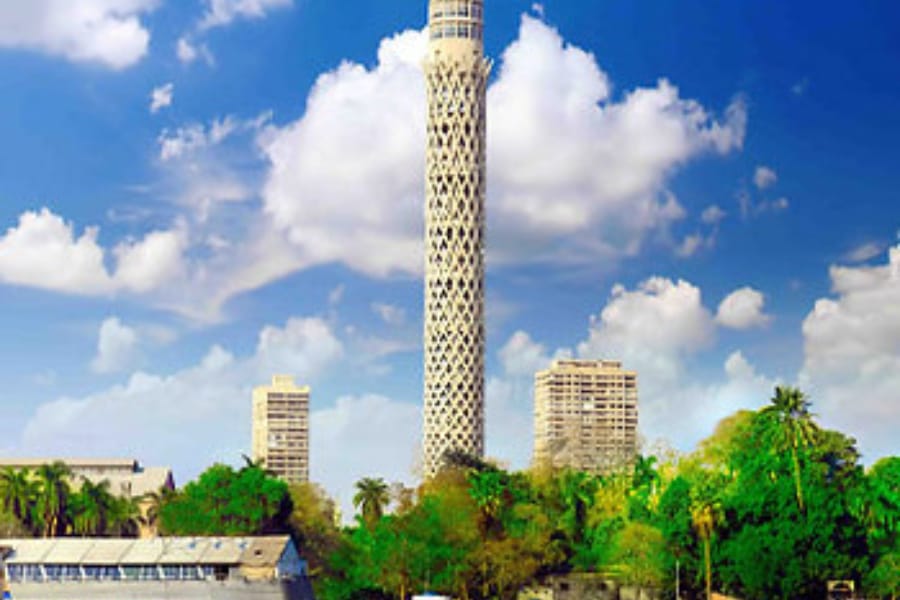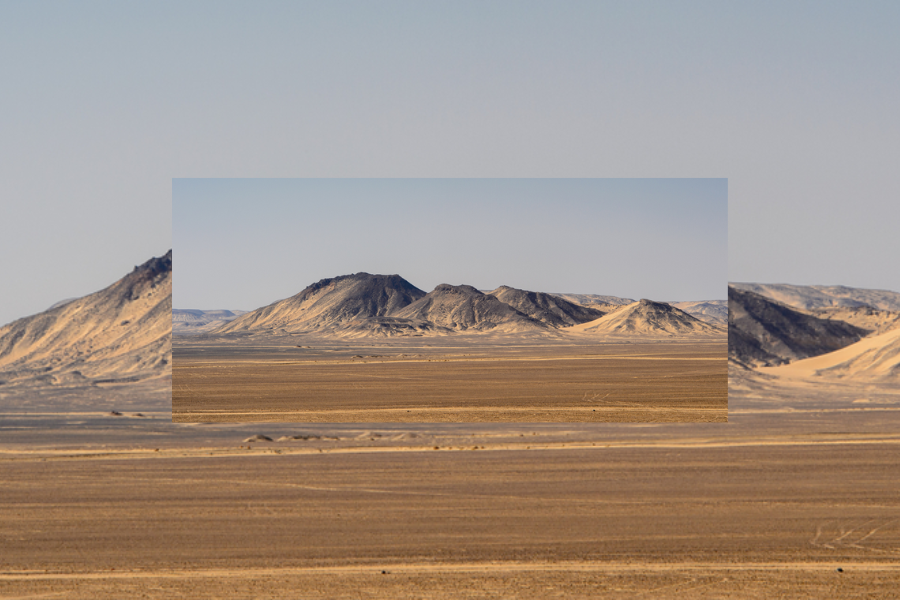The Pyramids of Giza — Egypt’s Timeless Wonder
The Pyramids of Giza are Egypt’s most iconic landmark and one of the world’s greatest architectural achievements. Rising from the edge of the Sahara Desert, just beyond Cairo City, these timeless structures embody the genius and spiritual devotion of ancient Egyptian civilization.
Built over 4,500 years ago, the pyramids stand as eternal symbols of power, faith, and engineering brilliance. From their near-perfect cardinal alignment to the sheer scale of their limestone blocks, every detail reflects extraordinary skill and vision.
In this guide, you’ll explore who built the pyramids, how and why they were constructed, what lies inside, and how to experience their majesty today through Egypt Day Tours and tailored Egypt travel packages.
🔍 Key Takeaways – Pyramids of Giza
- The Pyramids of Giza are over 4,500 years old, built during Egypt’s Old Kingdom era.
- The Great Pyramid of Khufu remains the only surviving Wonder of the Ancient World.
- They were constructed with limestone and granite using extraordinary engineering precision.
- The Giza Plateau complex includes the three main pyramids, the Great Sphinx, and several smaller tombs.
- Visitors today can explore inside certain chambers and enjoy panoramic desert views from the plateau.
Where Are the Pyramids of Giza Located?
The Pyramids of Giza are located on the Giza Plateau in northern Egypt, about 20 kilometers southwest of Cairo City. This elevated desert plain overlooks the Nile Valley and offers panoramic views of the ancient necropolis and modern city skyline.
The site’s strategic location was chosen for its proximity to the Nile River, allowing the transport of massive limestone and granite blocks from distant quarries by boat. Its dry desert environment has helped preserve these structures for over 4,500 years.
Today, the Giza Plateau remains one of Egypt’s most visited archaeological zones, featuring not only the pyramids but also the Great Sphinx, workers’ tombs, and solar boat pits — making it a central highlight of any Egypt day tour.
When Were the Pyramids of Giza Built?
| Pyramid (Dynasty) | Estimated Construction Period | Notes |
|---|---|---|
| Khufu (Great Pyramid) 4th Dynasty |
c. 2580–2560 BCE | Oldest and largest pyramid; estimated 20-year construction period. |
| Khafre Pyramid 4th Dynasty |
c. 2558–2532 BCE | Slightly smaller but appears taller due to higher ground level. |
| Menkaure Pyramid 4th Dynasty |
c. 2530–2500 BCE | Smallest of the three; construction likely halted by the king’s death. |
How Many Pyramids Are There at Giza?
The Giza Plateau is home to three main pyramids built for the pharaohs Khufu, Khafre, and Menkaure. These are surrounded by several smaller “queen’s pyramids” and mastabas belonging to royal family members and officials.
In total, there are over 100 pyramids discovered across Egypt, but the Giza trio remains the most famous, representing the architectural zenith of the Old Kingdom.
Who Built the Pyramids of Giza?
Giza Pyramids were constructed during Egypt’s Old Kingdom (c. 2686–2181 BCE) under powerful pharaohs who saw themselves as divine intermediaries.
Khufu (Cheops) commissioned the Great Pyramid around 2560 BCE;
his son Khafre built the second pyramid beside the Great Sphinx; and Menkaure erected the third, smaller pyramid.
Contrary to popular myths, the pyramids were not built by slaves. Evidence from workers’ villages, bakeries, tools, and tombs shows a professional workforce of skilled Egyptian artisans and seasonal laborers who were housed, fed, and organized at scale.
Through coordination, mathematics, and religious devotion, these workers transformed the Giza Plateau into an eternal masterpiece that still defines Egypt’s architectural identity.
The Three Pyramids of Giza
The Giza Plateau is home to three main pyramids built during Egypt’s 4th Dynasty, each serving as a royal tomb for a powerful pharaoh. Together, they form the most remarkable ancient monument complex on Earth.
| Pyramid | Pharaoh | Height (Original) | Highlights |
|---|---|---|---|
| Great Pyramid of Khufu | Pharaoh Khufu (Cheops) | 146.6 m (481 ft) | Oldest and largest pyramid; contains the King’s Chamber and Grand Gallery. |
| Pyramid of Khafre | Pharaoh Khafre (Chephren) | 136.4 m (448 ft) | Appears taller due to higher plateau; associated with the Great Sphinx. |
| Pyramid of Menkaure | Pharaoh Menkaure (Mykerinos) | 65.5 m (215 ft) | Smallest of the three; known for granite casing and refined internal chambers. |
How Were the Pyramids of Giza Built?
While the exact methods are still debated, most researchers agree that the Egyptians combined ingenuity, mathematics, and teamwork to move and position multi-ton blocks with astonishing precision—likely using straight, zigzagging, or circular ramp systems alongside sledges and rope.
Inside the Great Pyramid of Khufu, the base is nearly level to within centimeters, and each side aligns closely with the cardinal directions—evidence of advanced surveying and astronomical observation.
Beyond engineering, building a pyramid had deep spiritual meaning. Each block symbolized a step in the pharaoh’s ascent to the heavens—turning labor into devotion and technology into faith.
Discover how the pyramids were built, step by step — Secrets of the Pharaohs
How Long Did It Take to Build the Pyramids of Giza?
The construction of the Pyramids of Giza was a massive project that required decades of coordinated labor, planning, and engineering. According to most Egyptologists, the Great Pyramid of Khufu—the oldest and largest of the three—took approximately 20 years to complete, between 2580 and 2560 BCE.
Historical records, such as those of ancient Greek historian Herodotus, suggest that thousands of skilled workers—not slaves—labored year-round under an organized system of shifts. Modern archaeological evidence supports this, showing workers’ villages near the site where craftsmen, engineers, and laborers lived during construction.
The smaller pyramids of Khafre and Menkaure likely took between 15 and 30 years each, depending on size, available workforce, and resource supply. The exact duration varied, but all three pyramids were completed within roughly a century, forming the majestic Giza Pyramid Complex we see today.
What Are the Pyramids of Giza Made Of?
The cores of the Pyramids of Giza are mainly local limestone. Their outer surfaces were once clad in highly polished Tura limestone that reflected the sun, giving the pyramids a brilliant gleam; only fragments remain today near the base.
Interior chambers and passages used granite transported from Aswan, over 800 km to the south, chosen for strength and symbolic permanence.
Material choices carried symbolism: limestone as earth, granite as solar strength, and a gilded capstone in some eras reflecting divine perfection. Precision-cut blocks interlocked for stability—some weighing dozens of tons—showcasing mastery long before modern machinery.
What’s Inside the Pyramids of Giza?
Inside the Pyramids of Giza lies a complex network of corridors, hidden chambers, and shafts built to protect the pharaoh’s body and guide his spirit to the afterlife.
These interiors reveal the precision and spiritual devotion of the ancient Egyptians.
Inside the Great Pyramid of Khufu
The Great Pyramid, the largest of the three, includes the King’s Chamber, Queen’s Chamber, and the Grand Gallery. The King’s Chamber is made of solid granite and holds an empty sarcophagus that symbolizes resurrection.
Above it, five relieving chambers distribute the pyramid’s weight — a feat of ancient engineering.
Hidden shafts align precisely with Orion’s Belt and Sirius, symbolizing the pharaoh’s path to eternity.
Recent scans, like the ScanPyramids Project, have even revealed large unexplored voids suggesting new hidden chambers.
Inside Khafre’s Pyramid
Khafre’s Pyramid is slightly smaller but appears taller due to the higher ground. It features a simple interior design: a descending passage leading to the burial chamber carved into the bedrock.
The Sphinx and Its Connection to the Pyramids
The Great Sphinx of Giza sits beside Khafre’s Pyramid and is widely believed to bear the pharaoh’s likeness. Carved from a single limestone outcrop, the Sphinx symbolized royal power and divine protection, guarding the necropolis and serving as an eternal sentinel of the pyramids.
Inside Menkaure’s Pyramid
The smallest of the three, Menkaure’s Pyramid has a granite-lined burial chamber and a beautifully crafted sarcophagus (now lost). Despite its size, its precision mirrors the grandeur of its predecessors.
Why Were the Pyramids of Giza Built?
The Pyramids of Giza were built primarily as royal tombs, designed to ensure the pharaoh’s journey to the afterlife and his eternal unity with the gods. Ancient Egyptians believed that death was a passage to another realm, and the pyramid symbolized the sun’s rays lifting the soul toward heaven.
Politically, the pyramids represented divine power and stability. By building these monumental structures, pharaohs demonstrated their godlike authority and immortalized their reigns in stone. The immense scale of each pyramid also served as propaganda, reinforcing the ruler’s strength and Egypt’s unity.
Religious rituals conducted around the pyramids reinforced this cosmic link. Each pyramid formed part of a vast complex including mortuary temples, offering chapels, and causeways — together creating a sacred landscape celebrating life, death, and rebirth.
How Were Giza Pyramids Aligned with the Stars?
The Great Pyramid of Khufu is aligned with extraordinary precision to the four cardinal directions — north, south, east, and west — deviating by less than one-fifteenth of a degree. Scholars believe that ancient Egyptian architects achieved this using observations of circumpolar stars or solar shadows during the equinox.
This astronomical mastery reveals how architecture and cosmology were deeply intertwined in Egyptian culture, ensuring the pharaoh’s eternal ascent among the gods of the night sky.
Giza Pyramids and Orion’s Belt Connection
The alignment of the three main pyramids at Giza has long fascinated researchers. Many believe they mirror the three stars of Orion’s Belt, forming a symbolic bridge between heaven and earth.
In ancient Egyptian religion, Orion represented Osiris, the god of the afterlife. Aligning the pyramids with Orion’s Belt reflected the pharaoh’s transformation into a divine being destined to join the celestial gods.
Whether symbolic or intentional, this stellar alignment demonstrates the Egyptians’ advanced understanding of astronomy and their desire to connect architecture, religion, and the cosmos into one divine design.
Preservation and Modern Discoveries
Over 45 centuries later, Pyramids of Giza continue to face challenges — from natural erosion and urban expansion to tourism and climate effects. Despite this, Egypt’s Ministry of Antiquities and global institutions have launched long-term preservation projects.
The ScanPyramids Project has used cutting-edge 3D mapping, infrared thermography, and muon detectors to explore the pyramids non-invasively. Discoveries like hidden voids inside the Great Pyramid have redefined our understanding of its construction.
Restoration efforts include stabilizing foundations, improving drainage systems, and reducing damage from nearby pollution.
These projects ensure that the pyramids — humanity’s oldest architectural wonders — endure for generations to come.
The Solar Boat Pits and Funerary Symbolism
At the base of the Great Pyramid, archaeologists discovered enormous pits containing disassembled wooden boats — known as solar boats. These vessels were intended to carry the pharaoh’s soul across the heavens with the sun god Ra on his eternal journey.
One of these boats, restored and displayed in the Grand Egyptian Museum, offers priceless insight into ancient Egyptian shipbuilding and afterlife beliefs.
How to Visit the Pyramids of Giza
Visiting the Pyramids of Giza is an unforgettable experience. The site lies about 20 km from central Cairo and is easily accessible by taxi, Uber, or guided tour.
Arrive early in the morning or late afternoon to avoid crowds and capture the best photos.
- Opening Hours: Daily from 8:00 AM to 5:00 PM.
- Tickets: Entry to the Giza Plateau is around $10–15. Separate tickets are required to enter the Great Pyramid or Solar Boat Museum.
- Activities: Enjoy a camel or horse ride, visit the Sphinx, and explore panoramic viewpoints around the plateau.
Visiting Tips & Etiquette
- Climbing the pyramids is strictly forbidden — enjoy them from designated viewpoints.
- Wear light, breathable clothing and comfortable shoes for walking on sand and uneven terrain.
- Bring sunscreen, sunglasses, and water; the plateau can get very hot even in winter.
- Be cautious with vendors and camel rides — always agree on prices beforehand.
You can also book a guided Cairo Day Tour for expert insights, private transfers, and personalized exploration.
Multi-day Egypt tours combine the pyramids with Nile Cruises, Luxor, and Aswan for a complete journey through Egypt’s timeless heritage.
Interesting Facts about the Pyramids of Giza
- Each pyramid was originally covered with smooth white Tura limestone casing stones that reflected sunlight, making them shine like “beacons” in the desert.
- The Great Pyramid of Khufu consists of around 2.3 million stone blocks, each weighing between 2 and 15 tons.
- The pyramids’ sides align almost perfectly with the four cardinal directions — a precision of less than 1/15 of a degree.
- For nearly 3,800 years, the Great Pyramid was the tallest structure on Earth until Lincoln Cathedral was built in England in 1311 CE.
- The capstone, or pyramidion, was likely covered in gold to reflect the sun, symbolizing the pharaoh’s connection to the solar god Ra.
- Egypt is home to more than 100 pyramids — the Giza trio are simply the most famous. You can explore them all in our complete guide to Egypt’s pyramids.
Cultural and Historical Significance of the Giza Pyramids
Beyond their function as tombs, the Pyramids of Giza symbolized the unity of Egypt’s state, religion, and technology. They were centers of ritual, labor organization, and celestial observation that defined Egypt’s identity for millennia.
Their influence extended far beyond Egypt — inspiring architecture, mathematics, and mythology throughout history. Even today, the pyramids continue to embody humankind’s eternal quest for knowledge, faith, and immortality.
Final Thoughts: The Eternal Legacy of the Pyramids
The Pyramids of Giza are far more than monuments — they are living symbols of human imagination, resilience, and faith. For over four millennia, they have inspired scholars, explorers, and travelers alike, standing as a bridge between earth and sky.
Visiting these wonders offers more than sightseeing — it’s a journey into the spirit of ancient Egypt, where art, science, and divinity merged to create something truly timeless.
Whether you admire them at sunrise, from a camel’s back, or during a Nile Cruise, their magic remains unforgettable.
Plan your own Egypt tour package and witness the same horizons that once guided the pharaohs — an experience where history still breathes through every golden ray of the desert sun.
Top Giza Pyramids Tours You Can Book
Ready to turn your dream trip into reality? Whether you want a quick half-day visit or a multi-day adventure, you can easily
Tailor your Egypt itinerary to include the Pyramids of Giza as part of your journey.
Explore below some of our top-rated experiences — from quick Cairo breaks to unforgettable evening shows at the pyramids.
Each tour is led by expert Egyptologists and designed for flexibility, comfort, and immersive storytelling.
Select the option that suits your schedule, or combine multiple tours to create a personalized Egypt travel package.
Day Trip to the Pyramids
1-Day Private Tour Exploring the Great Pyramid, Sphinx & Valley Temple with an Expert Guide.
Duration: 1 Day
Half-Day Pyramids Tour
Quick yet unforgettable visit to the Pyramids and Sphinx — ideal for tight schedules.
Duration: Half Day
Sound & Light Show at Giza
Watch the Pyramids come alive at night with lights, music, and ancient storytelling.
Duration: Evening
2 Days Cairo Short Break
Explore Cairo’s highlights, including the Great Pyramids, the Sphinx, and the Egyptian Museum.
Duration: 2 Days
The Pyramids of Giza were built as royal tombs for Egypt’s Pharaohs. They were designed to ensure the kings’ journey to the afterlife and symbolize their divine power and connection to the gods.
The Pyramids of Giza are about 4,500 years old. The Great Pyramid of Khufu was completed around 2560 BCE, making it the oldest and largest of the three pyramids.
The Pyramids were built by thousands of skilled Egyptian workers, not slaves. Archaeological evidence shows they were well-fed laborers organized into specialized teams of masons, engineers, and craftsmen.
Yes, visitors can enter the Great Pyramid of Khufu. Inside, you’ll walk through narrow corridors leading to the Grand Gallery and the King’s Chamber, which once held the pharaoh’s sarcophagus.
The Pyramids are located on the Giza Plateau, about 15 km southwest of central Cairo, Egypt, on the west bank of the Nile River at the edge of the Sahara Desert.
The best time to visit the Pyramids of Giza is from October to April when the weather is mild and ideal for outdoor sightseeing. Early mornings and late afternoons are perfect to avoid crowds and enjoy golden light for photography.












